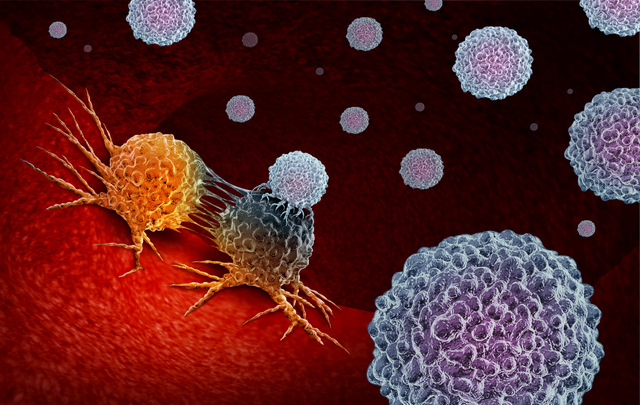Lung cancer is one of the deadliest forms of cancer associated with smoking. It is one of the biggest factors causing death among men and women around the world.
However, there is a lot more you may not know about this condition, such as how fast this type of cancer can spread, a topic covered in detail in this blog post by Miskawaan Health.
But what other interesting facts are there, in relation to lung cancer? In this blog post, we look at 10 of them.
Table of Contents
- 1. Lung cancer is the leading cause of cancer-related deaths
- 2. Lung cancer is not always deadly
- 3. Lung cancer doesn’t just affect older adults
- 4. Rates of lung cancer are gradually decreasing
- 5. Non-smokers can also get lung cancer
- 6. Doctors use a special method to measure smoking
- 7. There is a type of lung cancer with a high survival rate
- 8. Radon gas is deadly
- 9. Heavy smokers can also benefit from quitting
- 10. Immunotherapy can be used to treat non-small cell lung cancer

Data collected between 1930 and 2000 shows that lung cancer is the major cause of cancer-related deaths around the world. It kills almost thrice the men and women killed by prostate and breast cancer respectively.
Approximately 131,880 Americans die every year from lung cancer. However, increased awareness about the implications of smoking has resulted in a steady decline in new lung cancer diagnoses by 2% since the 2000s.
2. Lung cancer is not always deadly
As this cancer is generally diagnosed in its advanced stages, after it has already spread to other parts of the body, it has a low rate of five-year survival. However, if diagnosed in its early stages, it can not only be treated but also cured.
There are several treatment options that can help improve the symptoms and extend the lifespan in case the condition cannot be completely cured.
Though lung cancer is one of the top reasons for death, it does not always lead to death. If you have any risk factors, you should talk to your doctor and get yourself screened to catch the cancer in its early stages.
Symptoms like a chronic cough, hoarseness, chest pain, frequent shortness of breath, and unexplained weight loss should be reported right away to the doctor to increase the chances of early diagnosis of lung cancer.
3. Lung cancer doesn’t just affect older adults
While lung cancer is more common in people above the age of 60 years, it does not mean younger people never get it. A small number of people diagnosed with this type of cancer are younger than 45.
Those who have been smoking heavily from an early age have a risk of developing lung cancer early in life. For example, if you are 30 years old, there is a 0.16 percent chance that you will get lung cancer over the next 20 years.
4. Rates of lung cancer are gradually decreasing
This fact is good news – fewer people today get lung cancer than before. This is true for men and women. People are smoking lesser than in the past and hence the rates have gone down. However, you should have quit smoking a few years back to be at low risk of developing lung cancer.
People above the age of 50 who used to smoke heavily should continue getting themselves screened for 15 more years after they stop smoking.
5. Non-smokers can also get lung cancer
Contradicting the widespread myth that lung cancer affects only smokers, it is a surprising fact that those who don’t smoke can also develop this cancer like any other type. Though nearly 9 out of 10 people getting lung cancer are smokers, smoking is not the only reason someone may develop this type of cancer.
Some of the other causes include exposure to second-hand smoke, diesel fumes, asbestos, radon gas, and air pollution. The number of non-smokers dying from lung cancer puts it among the top death-causing cancers.
6. Doctors use a special method to measure smoking

Heavy smokers are advised to get a lung cancer screening test every few years. Doctor’s measure heavy smoking by what is called pack years. One pack-year of smoking is when the person smokes a pack of cigarettes regularly for a year.
A pack per day for 20 years is 20 pack years. People who have smoked so much are at a higher risk of lung cancer. However, occasional smoking or smoking a few cigarettes every day also increases the risk of this cancer.
7. There is a type of lung cancer with a high survival rate
Lung cancer can be one of the three primary types. Small cell lung cancer and non-small cell lung cancer are the most diagnosed types. The survival rate for these two is low but there is a third type with a very good rate of survival.
This is named the lung carcinoid tumour that makes up less than 5 percent of the total lung cancers. This type of cancer grows slowly and rarely spreads outside of the lungs. The five-year survival for carcinoid cancer is really high.
8. Radon gas is deadly
The most common cause of lung cancer after smoking is not passive smoking or air pollution. It is the gas with no colour, smell, or taste. Radon is a naturally occurring gas coming from radioactivity in the soil and rock. It is therefore generally found in basements.
One in every fifteen houses contains radon in high amounts. So, if you haven’t yet got your house tested for radon levels, it is time to do so.
9. Heavy smokers can also benefit from quitting
A general myth is that if you have smoked for long years, there is no use of quitting it later; once a heavy smoker can never lower his risk of lung cancer.
In reality, quitting smoking decreases the chance of developing lung cancer even if you have been smoking for a long time. Your lungs may have undergone some damage but stopping will prevent them from getting further damaged.
Even when you have been diagnosed with lung cancer, quitting smoking helps you respond better to treatment and benefit your health in several other ways. However, if you have smoked for a long time, it is advisable that you get yourself screened regularly, even after quitting the habit.
10. Immunotherapy can be used to treat non-small cell lung cancer

Recently, a treatment called immunotherapy has been proven to be effective at treating a type of lung cancer. This treatment keeps the cancer cells from turning off the T cells in the immune system. When you have T cells on, your immune system can easily spot cancer cells and kill them. Immunotherapy is currently being tested with clinical trials for other types of lung cancers.
There is so much misinformation and myths spread among people about lung cancer. These facts about Lung Cancer should help you get a clearer picture of how serious the condition is and what you can do about it.





